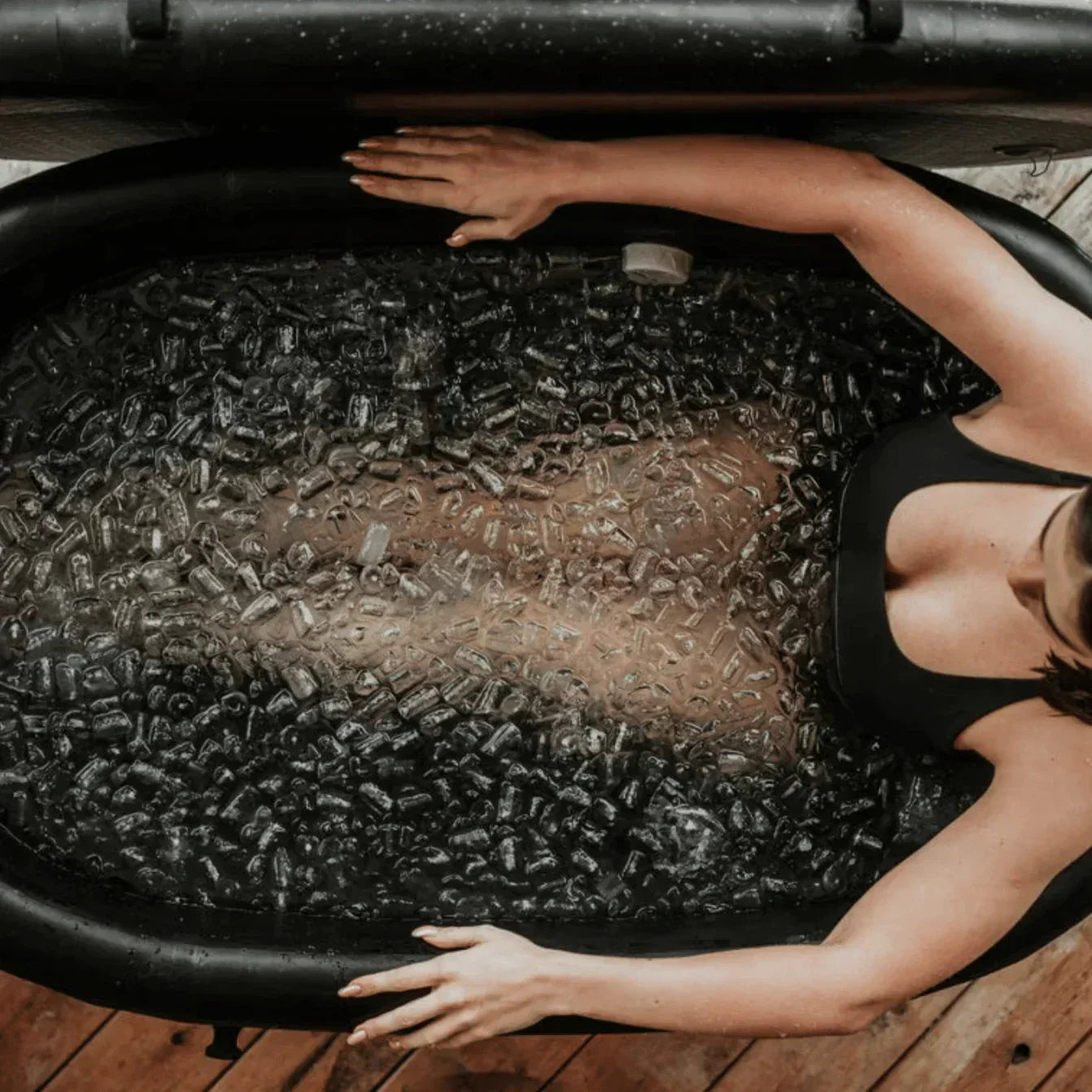Soaking in ice-cold water has become something of a ritual for everyone from elite athletes to stressed-out office workers. But one question that often gets a sloppy answer is: How cold should cold baths be?
It's not about bathing in water as cold as possible. On the contrary - temperature controls the whole experience and effect. Controlling the degrees is crucial to get the right response from the body: relaxation, recovery, mental sharpness or just pure discipline training.
So when people say:
"I'm going to jump into an ice bath and last 20 seconds"
then it is often more ego than effect.
Why temperature in cold baths is anything but a detail
The temperature in the cold bath makes the difference:
-
What effect you get (relaxation, recovery, focus or discipline).
-
How long you can stay in.
-
How the body, brain and nerves react.
Different targets require different temperatures. Many people think that the colder, the better - but in reality it's about balance. Not about suffering.
Temperature zones: from beginner to veteran
| Temperature (°C) | What the body does | Recommended time | For whom |
|---|---|---|---|
| 15-12 | Mild cold, muscle contractions | 5-10 min | Beginners, mental recovery |
| 11-8 | Respiratory surge, nervous system activation | 2-5 min | Experienced bathers |
| 7-4 | Strong cold response, shakiness | 1-3 min | Experienced, athletes |
| 3-1 | Near shock, rapid pulse | 0.5-2 min | Very used to |
| < 0 | Extreme cold, real ice bath | Max 1 min | Elite-controlled sessions |

Swedish Cold Generation 5 - Challenging the market with -1 - 8 ºC. Most commercial systems can't go below 3°C.
Temperatures for different effects
You should not only think about how cold you bathe - but why you are bathing. Below you can see which temperature is suitable for different goals:
| Objective | Temperature (°C) | Effect |
|---|---|---|
| Relaxation & sleep | 13-15 | Activation of the parasympathetic nervous system, reduced heart rate and stress level |
| Mental clarity & focus | 12-13 | Dopamine surge, increased alertness |
| Exercise recovery | 10-12 | Reduced inflammation, restored blood circulation |
| Stress regulation & breathing | 9-11 | Nervous system training, calm breathing under pressure |
| Mental discipline & perseverance | 4-8 | Cortisol regulation, strong mental training |
| Cold as shock therapy | 0-3 | Maximum adrenaline response, for habit |
Keeping track of the degrees means you don't waste the power you want to consume - whether you're struggling with training pain or sleepless nights.
Cold bath vs ice bath: what's the difference in degrees
-
Cold bath: 10-15°C. More bearable, longer time. Provides calm, recovery, focus.
-
Ice bath: 1-5°C. Short exposure. Activates shock response, adrenaline, pain regulation.
Therefore, longer time in the right temperature gives more:
-
Your body has time to activate the parasympathetic nervous system - which calms you down.
-
Hormones such as dopamine and serotonin increase after 3-5 minutes, not immediately.
-
You have time to teach your body to breathe through the discomfort - not run away from it.
-
Cooling at 12°C is sufficient to reduce inflammation and provide mental sharpness, without causing panic.
Summary: Why temperature control is important
-
Power and tolerance are controlled by the temperature level.
-
Individual adaptation - men and women react differently.
-
"Always below 5°C" is not the goal - balance is often better.
-
Being able to adjust to sub-zero temperatures is unique - Swedish Cold makes it possible to test levels in stages.
-
Research indicates the best effect between 10-15°C - the rest comes with practice, discipline and the right tools.
.
Safety first - the cold is powerful, not playful
Cold baths are not a competition to last the longest. Especially not at the beginning. It's easy to want to push yourself - but your body needs to get used to it gradually.
Listen to the signals: if you start to freeze uncontrollably, lose feeling or get dizzy - get up immediately.
The best way? Start with short dips, preferably with someone nearby. It's both safer and smarter. The cold can do wonders, but only if you treat it with respect.

